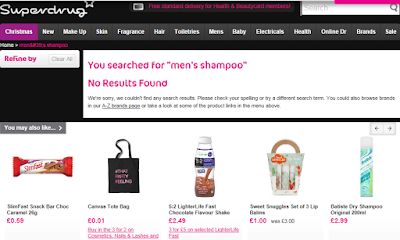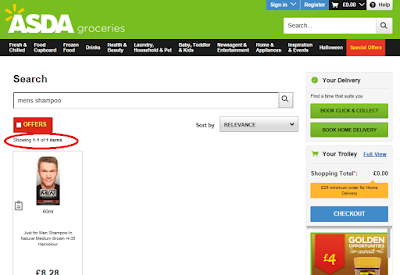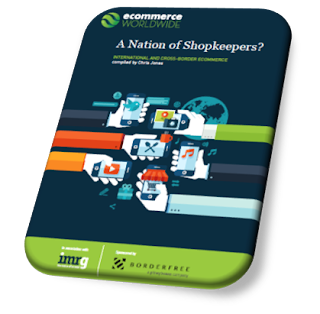I’ll get the punchline in first. My thesis is that if you
measure your conversion-rate as:
Checkouts per visitor-minute spent on your site
then most of the differences in conversion rate between
device-types will evaporate, and you’ll discover that your mobile visitors
convert just as well as your PC and tablet visitors.
To be more precise, my proposal is that checkouts per quantum of useful information/content consumed is the
best measure of conversion; unfortunately this is very difficult to measure
directly, and visitor-minutes is a reasonable proxy.
OK, so now for the back-story, analysis, and a request for
some data-sharing.
I’m currently doing the research needed to bring my book ‘The
Multichannel Retail Handbook’ back up to date. Obviously one of the chapters
that most needs revising is the one on Mobile, because it’s an area that’s developed
extraordinarily quickly, even since I wrote the previous edition in 2012.
I was peacefully trotting out a draft including the received
wisdom that mobile visitors don’t convert as well as desktop or tablet
visitors. There’s plenty of published statistics demonstrating this, and
typically they quote a kind of 40:90:100 index for smart-phone:tablet:desktop
conversion rates. On a typical retailer’s website, this might translate as conversion
rates of 1.2%:2.7%:3.0% or something like that. Obviously it depends what you
sell and so forth. The blended use of the term “mobile” meaning both
smart-phone and tablet together makes me wince – the channels are totally
different in usage and behaviours - but a generic mobile conversion rate is
about 50 on the same index, or 1.5% as a percentage.
Nice charts make better books and articles, so I had a hunt
through the Google Consumer Barometer 2014, for some extra supporting data,
expecting it to tell me that people use their smart-phones for research, but
not so much for purchasing, which also seems to be received wisdom. The actual
data was rather confounding.
Google asks two questions, which I’ll paraphrase as:
Q1. Did you perform research in the last week on
your device?
Q2. Did you buy a product or service in the last week on your device?
Q2. Did you buy a product or service in the last week on your device?
Clearly they get a percentage of respondents that says yes
or no to each question. Where it gets rather interesting is if you express Q2
as a percentage of Q1. Essentially you are asking:
Q3. What % of people who researched online on a device also made a purchase online on that device, over the duration of a week?
Here are the results for a sample of countries:
In many countries – the UK, Germany, Japan, UAE and even
Russia on this chart – the differences between mobile and desktop customers
suddenly disappear. In most others they are much less than expected, and for China
specifically the (not wholly unexpected) suggestion is that mobile converts
better than desktop.
How, then, to reconcile this with the well-documented statistics
that show that there’s a big difference? The answer appears to lie in the structure
of the question. Notice that the Consumer Barometer asks about an extended time
period: a week. It does not ask about ephemeral visits, visitors, or page-views.
Depending which studies you believe, most purchases have a
consideration duration of somewhere between 2 days and 2 weeks, in countries
where the internet retailing is well-established and therefore online research
a prevalent shopper-behaviour. There’s a hint of some consistency here:
Consumer Barometer asks about a week, shoppers take about a week to decide.
What we seem to be seeing is that a shopper needs to consume
a consistent quantity of information
in order to make a purchase decision. The ratio we’d really like to study is
Checkouts per quantum of information consumed
but that isn’t terribly easy to measure, so we need to look
at some more accessible proxies for it.
One possibility is page-views. This is often a KPI, or wrapped
into a more complex “engagement” KPI. But if you think about it in terms of quantity of information it’s unhelpful. A
page on a mobile site often contains much less information, and even if it
doesn’t, shoppers engage with mobile site pages differently. On desktop they
read the detail, on mobile they just read the headlines, and moreover they may read
in a much more interrupted environment such as while commuting.
Fortunately there’s a much better statistic:
session-duration. The first thing this does is bear out the headlines vs detail
idea. Here are the published session durations for the New York Times:
|
NY
Times Data
|
Avg
Pages per Visit
|
Avg Session
Duration
|
|
Mobile
|
2.55
|
1 min 43 secs
|
|
Desktop
|
3.58
|
17 mins 31 secs
|
(Data source: SimilarWeb/Clickz)
Much more importantly for a retailer, it also bears out the
idea that checkouts per visitor-minute
is a much better measure of the effectiveness of a given channel. Obtaining
publishable conversion data for retailers is pretty tricky. We can at least
test the hypothesis in print by considering session-duration data published for
Amazon against generic conversion-rate data.
|
|
Generic
Conversion Rate
|
Amazon
Avg Session Duration
|
% conversion
rate per minute session duration
|
|
Blended
Mobile
|
1.5%
|
4 mins 38 secs
|
0.32%
|
|
Desktop
|
3.0%
|
8 mins 35 secs
|
0.35%
|
(Data source for Amazon: SimilarWeb/Clickz)
As if by magic, the conversion
rate per visitor-minute is pretty
much consistent across both channels!
OK, one data point doesn’t make a case.
Privately I’ve tested this against various data that clients have shared with
me, and it does seem to stand up remarkably
well, but unfortunately of course I can’t publish such data points.
It seems to “feel” right though: the quantity of checkouts
you’ll get on a channel is proportional to the time (or more likely in reality,
information) customers engage with you and glean some information or data that’s
useful to them in what they’re doing. Viewed from the customer’s perspective, a
successful visit to a site – a “conversion” from their point of view – is one
where they succeed in finding out what they wanted to know.
They might do that staccato on mobile, gathering one bit of
data and then looking elsewhere. Or they might do it legato on desktop or
tablet, gathering multiple items in one trip. More likely they’re doing both, during the course of their decision-making process over a week or two.
There’s a probability that this particular item of information, gathered on
this particular visit, is the final piece in the jigsaw for them, and results
in a conversion from your point of view. The chances of that happening on a
given channel or device are proportional to the time-spent=information-gathered
on that channel.
If this idea is right, it’s potentially a very good way of
measuring the relative effectiveness of your user-experience by channel. Viewed
overall it tends to suggest that the stereotype that mobile doesn’t convert anywhere
nearly as well as desktop is simply wrong.
What would be really interesting is if there are sites out
there willing to share data that supports or challenges this. For those worried
about confidentiality, I’d simply note that you can use any arbitrary time-unit
and then not make public what that time-unit was, provided you use it consistently
across devices or channels, and then just report checkouts per internally
measured session-duration unit by device-type.















